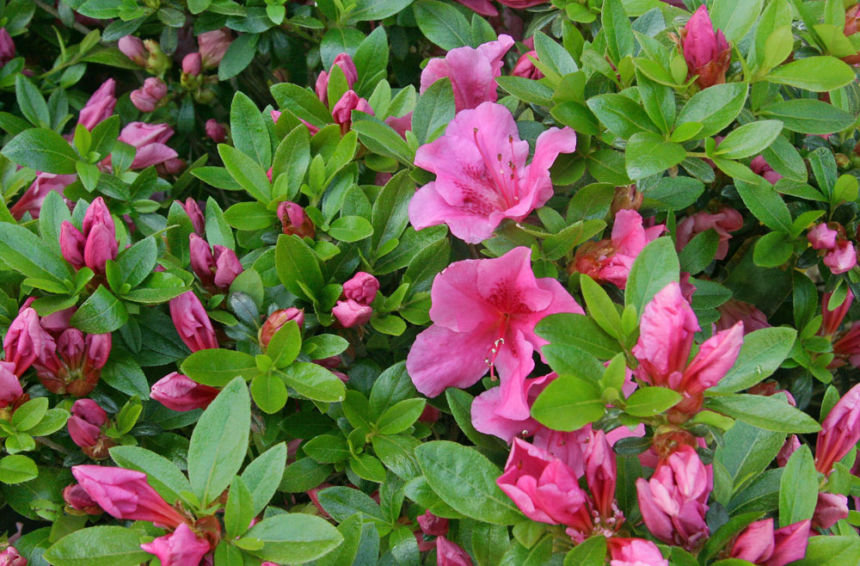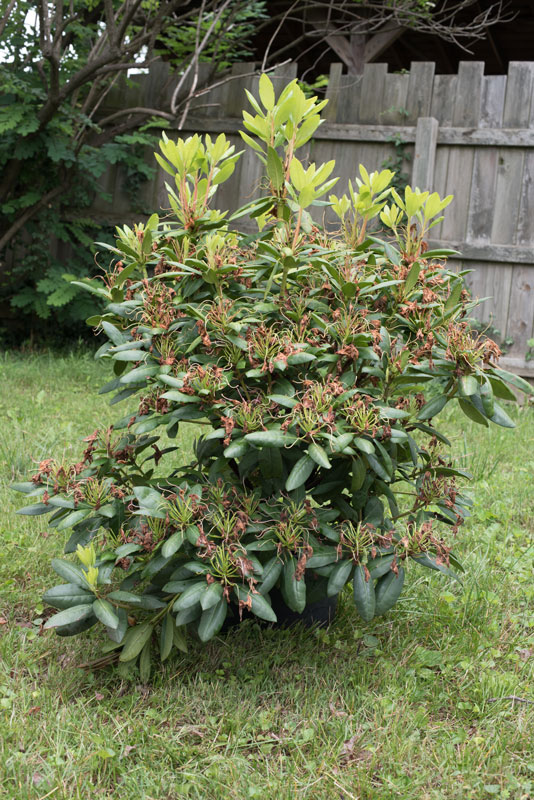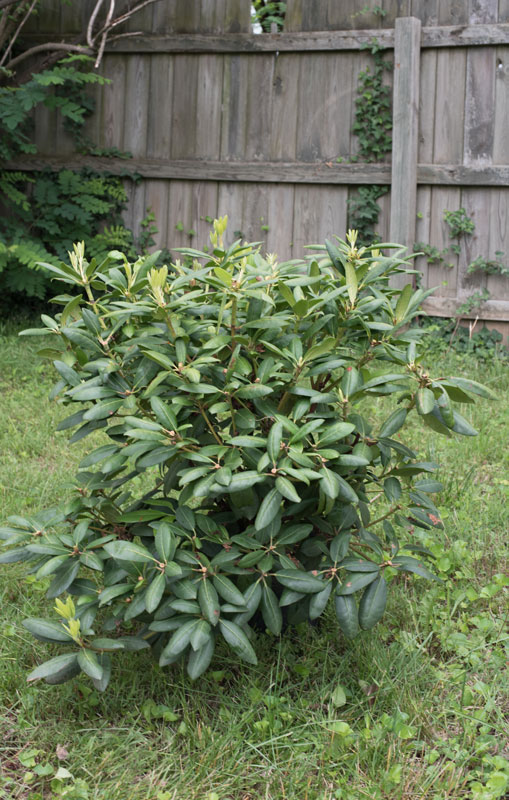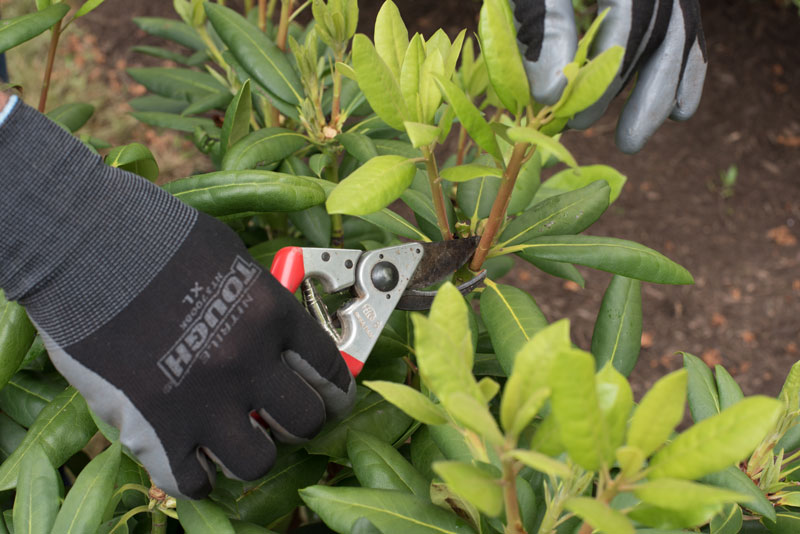
Pruning and Care for Azaleas and Rhododendron
David Yost, Merrifield Plant Specialist
Summer is almost here, and our beautiful azaleas and rhododendron are done or almost done blooming. This is the perfect time to prune your plants to increase fullness, promote overall health, and encourage a beautiful bloom in the upcoming year. Azaleas and rhododendron both respond well to pruning, and if done right, the plants will produce more blooms in a concentrated form next year.
For many of us, pruning back our prized shrubs can be a daunting task. Before you begin, analyze your goals and objectives for the task. Most people prune to manage the shape and size of their shrubs. Here are a few simple tips to assist you in preparing your plants for a full and beautiful bloom next year.
The best time to prune is at the end of your plants’ bloom cycle.
Your azaleas and rhododendron will set their buds for next year by the end of August. To avoid cutting off next year’s blooms, trim your plant soon after the current blooms fade. For most of us, this will be now or in the next couple of weeks. I recommend completing your pruning project by the fourth of July holiday.
The correct tools make a difference.
For the sake of the plant—and your hands—you will want to make sure that you have both hand pruners and a pruning saw. Hand pruners work well for limbs under ¾ inch in diameter. If you use your hand pruners on limbs larger than that, you run the risk of ruining your pruners and mangling the branches of your plant. For the best results, switch to your pruning saw for all branches over ¾ inch in diameter. Also, before you begin pruning, clean your pruners and pruning saw with rubbing alcohol to ensure they are free of any contaminants that may harm your shrubs.
Prioritize dead branches for removal.
Before you begin shaping your plant, check it for dead branches. Unhealthy branches pose a risk to your plant’s overall health by increasing its exposure to infection and bugs. Dead branches will have no living leaves or new growth. It’s best to remove these first. Use your pruners or pruning saw to remove any dead branches, and remember to clean your pruners before moving on to complete additional pruning on your plant.
After you remove the dead branches, prune away overgrown branches to bring the plant to the size and shape you wish to achieve. Cut just above the node where branches separate with your hand pruners.
Beware of over trimming rhododendron.
Azaleas respond well to pruning and even thrive with a major trim, provided you prune the plant before it sets its buds for next year. If your azalea is overgrown and needs a significant pruning, you can continue trimming branches as far down the plant as needed.
Rhododendron, however, prefer a light pruning rather than a heavy trimming. Remove dead blooms from your rhododendron plant, then prune lightly, using selective thinning to lightly prune the plant. If your rhododendron is overgrown, you can remove half the stems from the next older layer of the plant (below the one you just pruned). Save the second half for the following year. If your rhododendron are very overgrown, it may take a few years to prune your plants to a desirable height.
For even better blooms next year fertilize your plant after pruning.
After pruning I recommend fertilizing your plant to promote growth and increased blooms next year. You can use the Merrifield Flowering Plant Food or Holly Tone if you’re looking for an organic option.
Understand common issues and how to treat them.
When your azalea plant blooms during damp, rainy weather it may suffer from a common, but preventable, fungal infection: Ovulinia petal blight. If dead blooms remain on your azalea when you begin pruning, this fungal infection is the cause. To enable the blooms to fall off the plant before the bloom cycle ends and extend the bloom time of your plant next year, try spraying your plant with fungicide just before the bloom cycle begins next year. We recommend using Bonide Infuse.
Another common problem is caused by tiny insects called lace bugs. These critters may feed on your azaleas and rhododendron during the summer months. You’ll know if you have a lace bug problem as they suck the sap and bleach the color from your foliage causing the leaves to turn a yellowish-white color. You can also see these tiny bugs on the underside of the leaf if you flip the leaf over.
I recommend using Bayer Advanced Tree & Shrub Protect & Feed to treat these bugs if you encounter them. This product is a systemic drench control product that you put into the soil for the plant to absorb through the roots. One application will last all season. Apply this about once every three years to keep the lace bugs under control.






